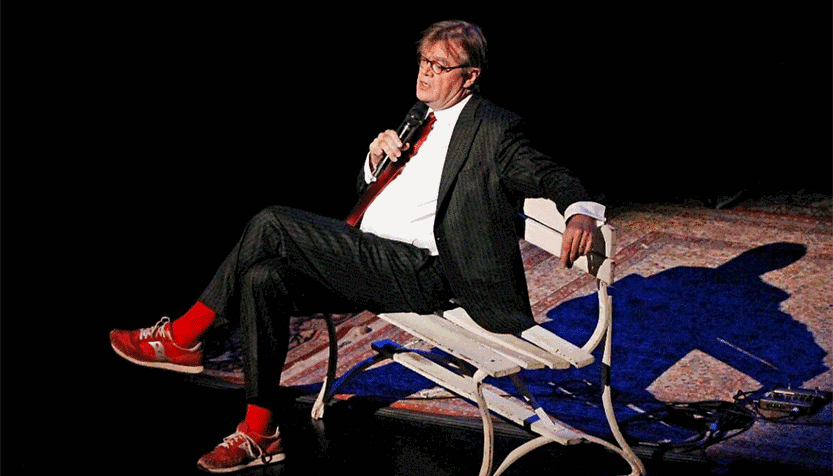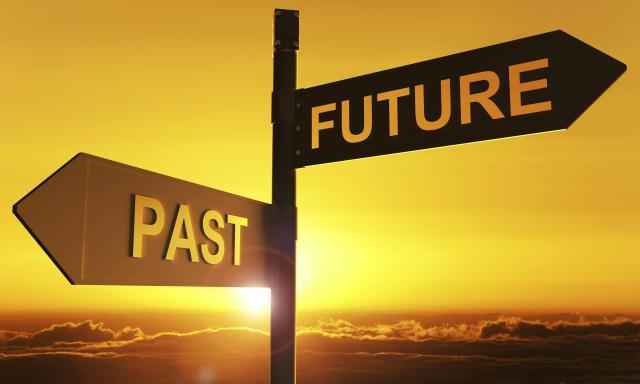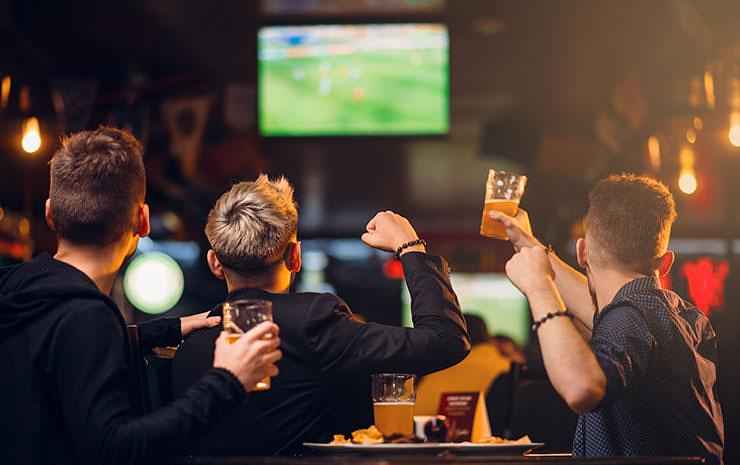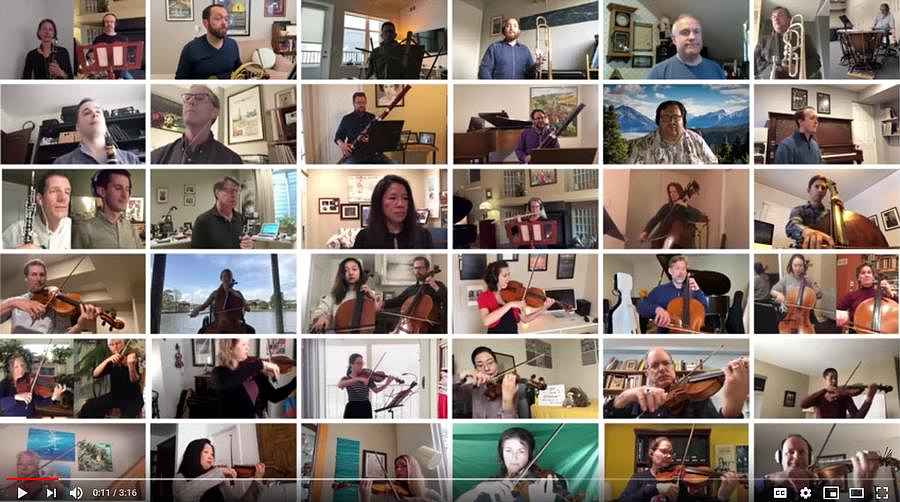






See listing of Recent and Most Popular articles on the Home Page
Connections
Category: Technology / Topics: Arts & Entertainment • Communication • Computers (and other Digital devices) • Coping • COVID-19 • Crisis • Current Events, News • History • Innovation, Invention, Creativity • Inspiration • Internet • Music • News • Opportunity • Religion • Technology
Ode to Joy
by Stu Johnson
Posted: April 9, 2020
The human spirit responds to the COVID-19 pandemic…
Putting the COVID-19 pandemic in perspective (Number 1)
See a list of all of my articles related to COVID-19
Imagine if the COVID-19 pandemic had occurred in any other decade during your lifetime. Depending on how many decades that may be, the role of technology could be starkly different from the highly connected world we know today. For a glimpse of this, check out what columnist Burt Constable said in his Daily Herald (suburban Chicago) column "Imagine today's COVID-19 with yesterday's technology" In addition to what Constable says so well, here are some of my own observations of how technology and the human spirit have combined to help deal with the monster of COVID-19.
With the amount of innovation and creative expression that has been unleashed during the pandemic, I am awestruck by this affirmation that God indeed implanted his own role as creator in us as his "image-bearers." These are desperate days when many are haunted by loneliness, isolation, loss of work, financial distress, depression, loss of loved ones. Yet, in the midst of darkness, countless people have brought hope and light, much of that through the creative spark that exists in each of us as image bearers. Just a few examples follow. The list is far from exhaustive. As I was working on this blog, each time I came back to refine it, I would think of another example. So, as you read this, think of all the others you are aware of.
Health Care. While there are still reports of urgent needs for protective gear, ventilators, and other medical needs, many across the US (and the globe) are responding with passion and imagination:
- People with access to 3D printers have turned to producing components for face masks and shields. The stories I have seen typically involved individuals or businesses who connect with local hospitals to help maintain their stockpiles.
- Companies with fabrication capabilities have similarly retooled to produce masks, shields, even ventilators and other equipment. These efforts reveal a wide range of innovative approaches. They also display a nimbleness to change course not typical of larger corporations, even though the latter may eventually outstrip the little guys in capacity.
- The suggestion that cloth face masks can be helpful outside of the health care system (which requires higher standards) has encouraged a wartime level home production effort.
As one small example, on a recent Saturday morning our church sent out an email calling for 200 cloth masks needed for a local retirement community. My wife did her small part, getting instructions from an internet site. Combined with the efforts of others, the need was met by 4 o'clock that afternoon—and many more masks were made in following days for this and other needs, including the food pantry in which we volunteer. This is going on all over the world and allows commercial efforts to focus on getting masks to health care workers and first responders.
- College dormitories and hotels, empty due to campus and business shut downs, are being made ready for use by local hospitals. In some cases they are being reserved as overflow space for patients. In other cases they are being made available for local health care and emergency personnel, to provide a place of respite close by, reducing travel time and potential threats of exposure at home.
News, Communication, Community. As Burt Constable pointed out in the column referenced above,
"Instead of being bombarded 24 hours a day with nonstop COVID-19 news and speculation, most suburbanites in the 1960s were content with the news arriving at 5:30 p.m. in a new, longer 30-minute format called the CBS Evening News."
Things are being done today that were either prohibitively expensive or not even possible 30 years ago when the World Wide Web was little more than an idea that could transform the internet—but it was a steep, slow uphill climb from slow speed phone modems, still-primitive computer power and expensive data storage to the high speed access, powerful devices and practically unlimited storage readily available today.
- Schools that have closed, from elementary through higher ed have turned to "virtual learning."
Many schools already had experience with this technology to cover "snow days" and other disruptions. To others it was new, but available. The biggest challenge has been scaling up from short-term, limited application, to widespread use across the curriculum.
Some subject matter requires considerable creativity to conduct in a virtual setting. I taught radio and television production, but I also think of art, music, science labs, etc.. However, with smarthphones, tablets and high speed internet, there are a lot of possibilities that would only have seemed like science fiction when I attended grade school.
With public libraries and other locations offering public access to computers with internet access now closed, inequities in American society are becoming particularly evident. Our local K-12 district in an affluent Chicago suburb reported providing 500 tablets to students who did not have such devices at home. In other districts, especially in poor rural areas, school buses are being enlisted as mobile hot spots to provide WI-FI from school parking lots. Saying it and doing it are often miles apart, but that's where imagination and the human spirit can rise to the challenge.
- Houses of worship and a host of other places have suspended on-site activity during the pandemic.
For religious communities, the pandemic affects holidays of the three major faith groups at nearly the same time. The week of Jewish Passover begins this Saturday, April 11; the Christian Holy Week ends with Easter on Sunday, April 12; and the 30-day Muslim Ramadan begins Friday, April 24. Even though Easter relates to Jesus' observance of the Jewish Passover, they rely on different lunar calculations, so do not always coincidence. Ramadan starts on the same date each year on the Islamic (lunar) calendar, but varies widely when translated to the Gregorian (solar) calendar, and can also vary from country to country.
Some houses of worship already had streaming capability; others record the service and make it available through their website. Either way, there have been innovative ways to maintain a sense of the normal flow of the service while minimizing the number of people required and protocols to keep them safe—using segments recorded or streamed from outside locations. I know of one church that streams its service in normal times, so it has a library of music by their worship team that can be plugged into their services now (with a caption indicating it was recorded earlier since people are close together).
Passover, Easter and Ramadan are not just communal, but family celebrations. How do you do a virtual Seder, Easter dinner, or Ramadan fast-breaking meal? It is going to happen, and people around the world are coming up with very imaginative ways to do them, combining technology and their own family situation. It will be a holiday season to be remembered!
- Virtual conferencing has allowed us to continue meeting, even as we individually stay-at-home.
Conferencing by phone has been common in business for a long time. I am on a board whose members are scattered around the country. We always meet by teleconference. Teleconferencing that connected groups of people in two or more conference rooms now has taken on a similar form as all participants are physically separated. Some who had been conferencing by audio over the phone may have been led to videoconferencing, a move that could become the new normal, once the crisis passes.
The sci-fi notion of video phones and watches that seemed only a fantasy a few decades ago has become reality through Skype, Facetime and similar apps for our computers and smartphones.
Many people, including me, were not familiar with Zoom until a few weeks ago. Now, it seems we're all Zooming as a way to stay connected and keep many group activities going. (The rapid rise in Zoom use—from 20 million to 200 million in a matter of days—exposed issues of hacking and privacy concerns. Some users have gone back to Skype and other platforms, while millions are staying with Zoom, even as it works out these concerns with stricter protections).
- News reporting has demonstrated the power of the internet and technology today.
With remarkably few glitches, it has been impressive to see newscasts continue, even when only one or two anchors are the in the studio and everyone else, including interview guests, are using Skype, Zoom or related technologies from their homes and other locations. Can you imagine some of the conversations at home on which background to share with the public . . .where should I sit? Fireplace, bookshelves, dining room table . . . and tidy up before you go live!
It's not just the on-camera people who are outside the studio; producers and some production staff can also operate remotely. Even ten years ago that would have been far more difficult; not long before that it would have been impossible. Now, we're doing it 24/7. And not just news, but talk shows, variety shows and similar programs have adapted this "inside-out" approach to keep their programs live.
Seeing so many people at home reminds me of Edward R. Murrow's "Person to Person" visits to the homes of celebrities. It ran on CBS from 1953 to 1961, when nationwide television networks were still new, years before NBC would become the "full color network" in 1967, and "cable" meant extending broadcast TV into areas where antennas would not work. .
Creative expressions. When I read a book, I'm often curious to see how the title relates to the content—a revelation that often occurs toward the end. Such is the case with the title for this blog, as you will soon find out.
The internet provides the "highway" while today's connected devices and software become the "vehicles" that make possible the explosion of creative expression we're witnessing now—even as millions are restricted by stay-at-home orders and the challenges of social distancing.
- There have been numerous examples of creative expressions through the internet. Music. Dance. Theater. Art.
A boy plays the guitar at his house while his uncle accompanies him on the piano at his house. In a neighborhood where kids are doing a lot of chalk drawing, a mother flies a drone over the scene then adds music to create a video. Small to large music groups perform together, each from their own location (see the "Ode to Joy" link below). A state trooper does a dance routine with his daughter—recorded by one camera as they keep their distance in one room, but posted online for all to see.
The list goes on and on, and expands with each day we live under stay-at-home and other restrictions. Some of these new-found ways of performing will likely continue and influence the "new normal" once the pandemic passes.
- One of many examples of virtual ensemble performances is the Colorado Symphony's version of "Ode to Joy," the fourth movement of Ludwig van Beethoven's 9th Symphony. Following a portion of this familiar passage, concertmaster Yumi Hwang-Williams thanks viewers for their support during the crisis and invites them to a full-length, in-person performance of Beethoven's 9th Symphony at Red Rocks Amphitheater in July.
The connection we long for
For a preview of what awaits us when the pandemic passes—and a reminder of the joy of community that seems so distant now—see the Som Sabadell ("we are Sabadell") flash mob version of Ode to Joy.* On May 31, 2012 one hundred people from the Valles Symphony and several choirs gathered in an outdoor plaza to celebrate the 130th anniversary of the founding of Banco Sabadell (Spain). On the YouTube page on which this link appears, Nicola Rifino recently commented::
I am an italian doctor. I am fighting this COVID war, dreaming to have this square back, dreaming to have our normal life back. Together we can win, let's fight for our future, for our normality. Keep united!
So may it be! Stay smart. Stay strong. Stay safe.
* This piece was used in "Music in the Malls," a collection of 31 flash mob videos, most celebrating the Christmas holidays. I started this collection in 2015 after seeing a flash mob performance of "Hallelujah Chorus" from a shopping mall food court and the Air Force Band flash mob at the National Air and Space Museum, performing "Jesu, Joy of Man's Desiring" and "Joy to the World." The Som Sabadell "Ode to Joy" was part of that first year. Each year I added more, most related to Christmas, some serious, some whimsical, but as many as possible exhibiting high quality production. I was not able to do an update for 2019, but hope to do it again for the 2020 holiday season.
This article also appears on my InfoMatters blog.
Search all articles by Stu Johnson
Stu Johnson is principal of Stuart Johnson & Associates, a communications consultancy in Wheaton, Illinois. He is publisher and editor of SeniorLifestyle, writes the InfoMatters blog on his own website and contributes articles for SeniorLifestyle. • Author bio (website*) • E-mail the author (moc.setaicossajs@uts*) • Author's website (personal or primary**)* For web-based email, you may need to copy and paste the address yourself.
** opens in a new tab or window. Close it to return here.
Posted: April 9, 2020 Accessed 1,258 times
![]() Go to the list of most recent Connections Articles
Go to the list of most recent Connections Articles
![]() Search Connections (You can expand the search to the entire site)
Search Connections (You can expand the search to the entire site)
![]() Go to the list of Most Recent and Most Popular Articles across the site (Home Page)
Go to the list of Most Recent and Most Popular Articles across the site (Home Page)
 Loading requested view...
Loading requested view...
